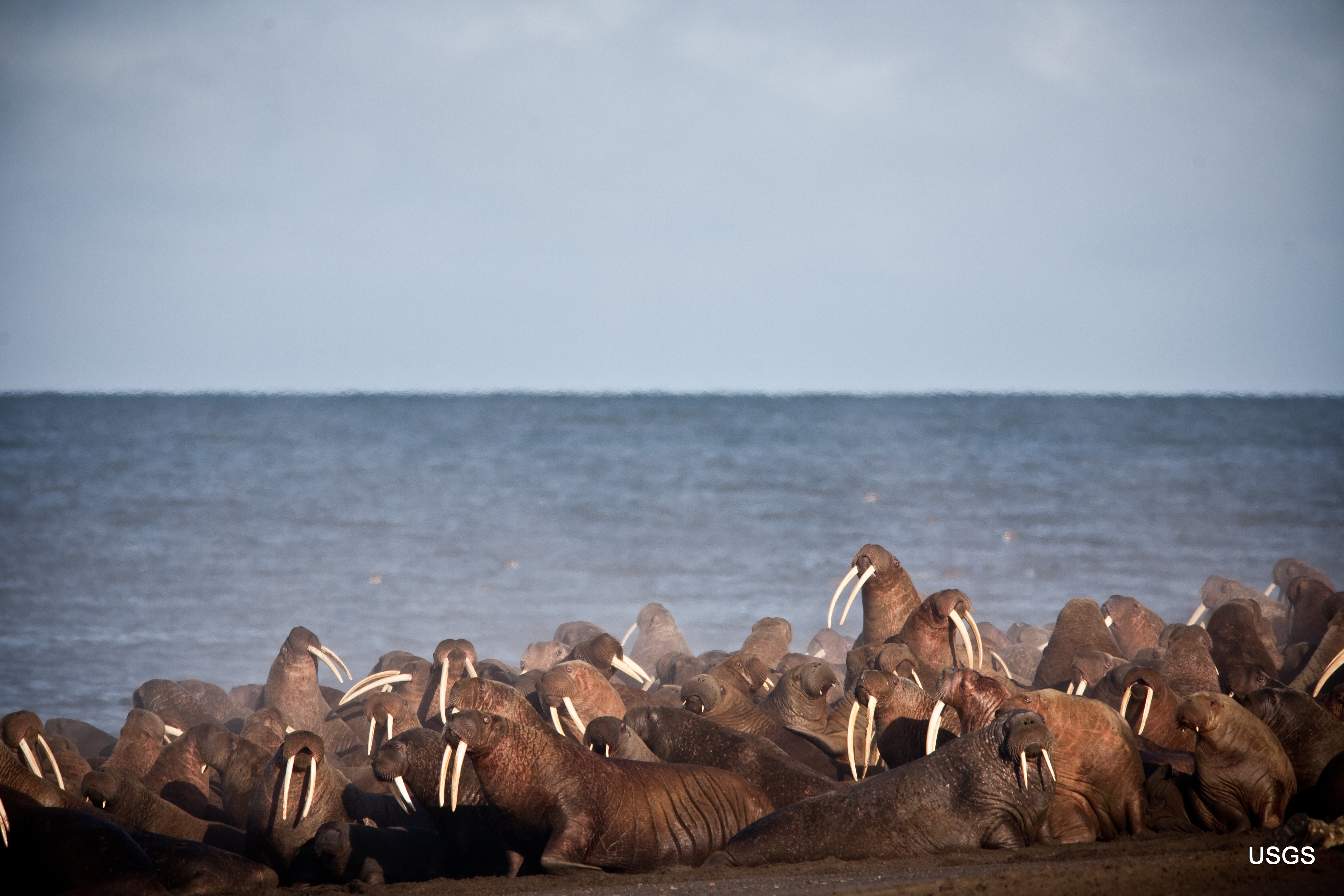There’s a walrus haulout near Point Lay again, but it’s begun later than in recent years

Pacific walruses have started to gather on an Arctic beach in Northwest Alaska, continuing what has become a near-annual ritual for the animals living in a habitat that is losing its summer and fall sea ice.
A crowd of approximately 1,000 walruses had gathered onto a Chukchi Sea beach near the Inupiat village of Point Lay, federal regulators learned Friday.
“The community members reported that they were seeing walruses that are hauling out,” said Andrea Medeiros, a spokeswoman for the U.S. Fish and Wildlife Service.
[Alaska and Russia join forces to create 160-year database of walrus haulouts]
The big Point Lay gatherings have happened almost every fall since 2007, a year notable for sea-ice retreat. Walruses normally use floating ice as platforms to rest between dives to forage for food, but summer and fall melt in 2007 drove sea ice extent to what was, at the time, a record low.
When there is no floating ice, the animals are forced to go to shore, putting them farther away from the best food sources and at risk of trampling injuries and deaths as they pack tightly onto beaches.
As of Friday, this year’s Point Lay gathering was — so far — much smaller than the crowds of tens of thousands of animals that came ashore in past years. The exact crowd size is still unknown and could change, Medeiros said.
“You don’t know what’s going to end up being there,” she said.
It is later than normal, as well, happening at a time when the region’s walruses are usually starting their migration south, Medeiros said.
It is also a bit surprising. Even though sea-ice extent reached the second-lowest minimum on the satellite record, there were some bits of lingering ice that had remained for a long period over the Hanna Shoal, an area in the Chukchi Sea favored by walruses for its shallow waters and plentiful food supplies. Biologists had been hoping that the ice would allow the walruses to avoid the large Point Lay gatherings entirely this year.
[Could artificial rafts replace missing sea ice for hauled-out walrus? Feds say no for now]
Community members and agencies have already taken steps to protect the beached animals.
The Federal Aviation Administration, as it has done in past years, in June advised aviators to avoid bothering walruses when they are present. Point Lay residents have also advised a shipping company that uses the area about the walrus gathering, Medeiros said.
Loud noises and other disturbances can frighten the beached walruses, setting off stampedes that can kill some of them. Young calves are especially at risk of being crushed when large numbers of walruses stampede.
The walrus congregations this far north are composed mostly of females and calves. Adult males are usually farther south in the Bering Sea at this time of year.